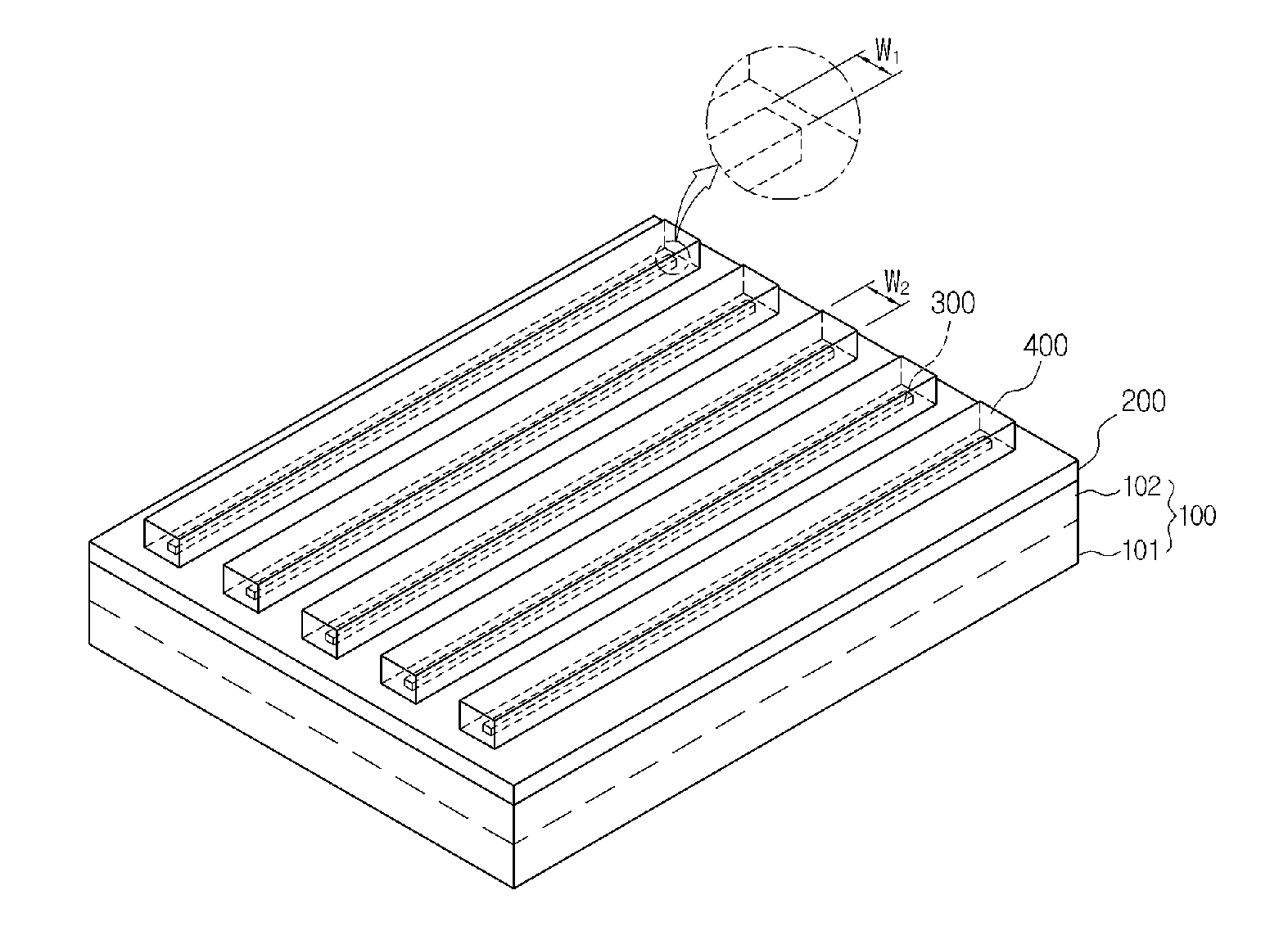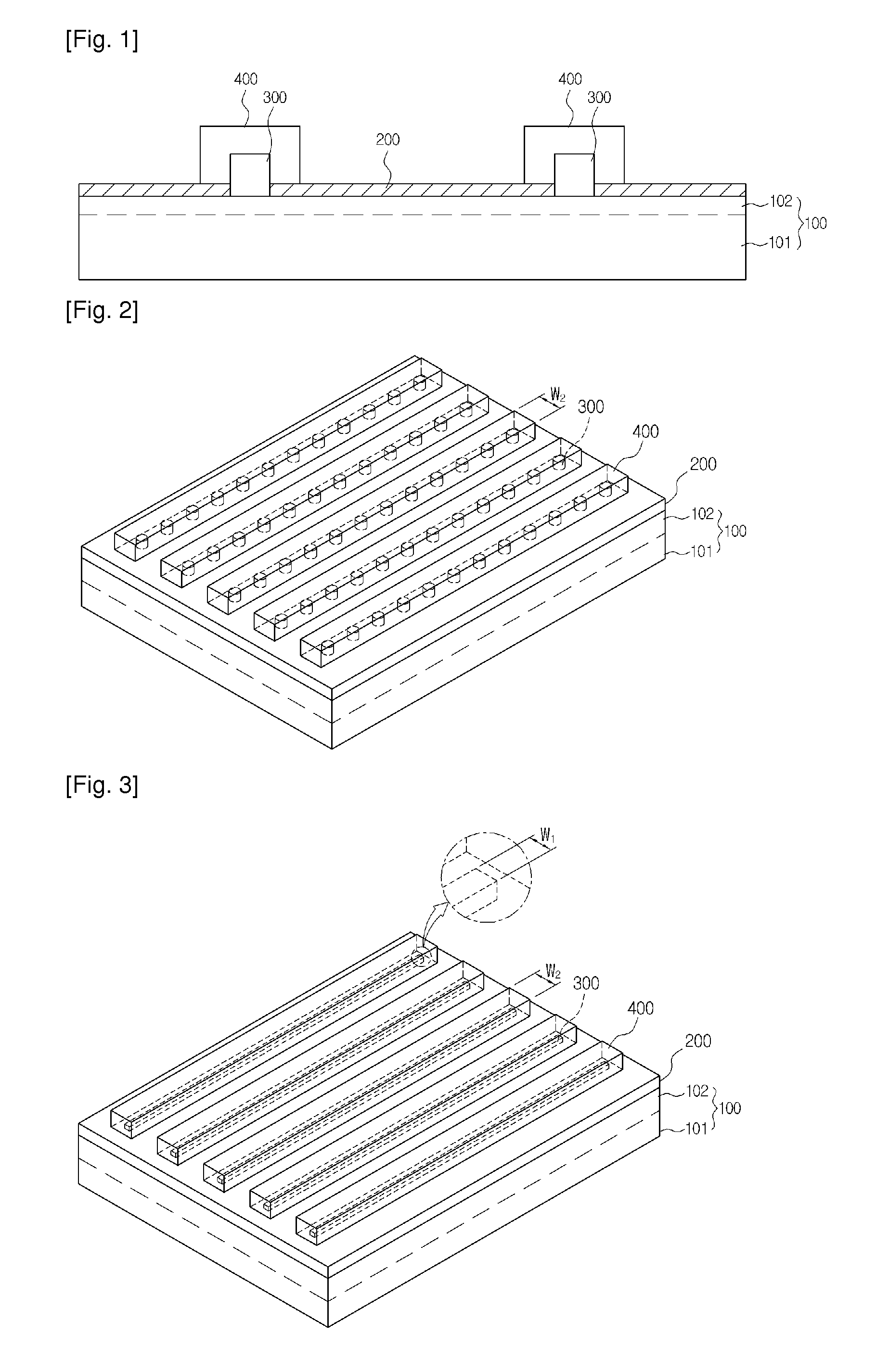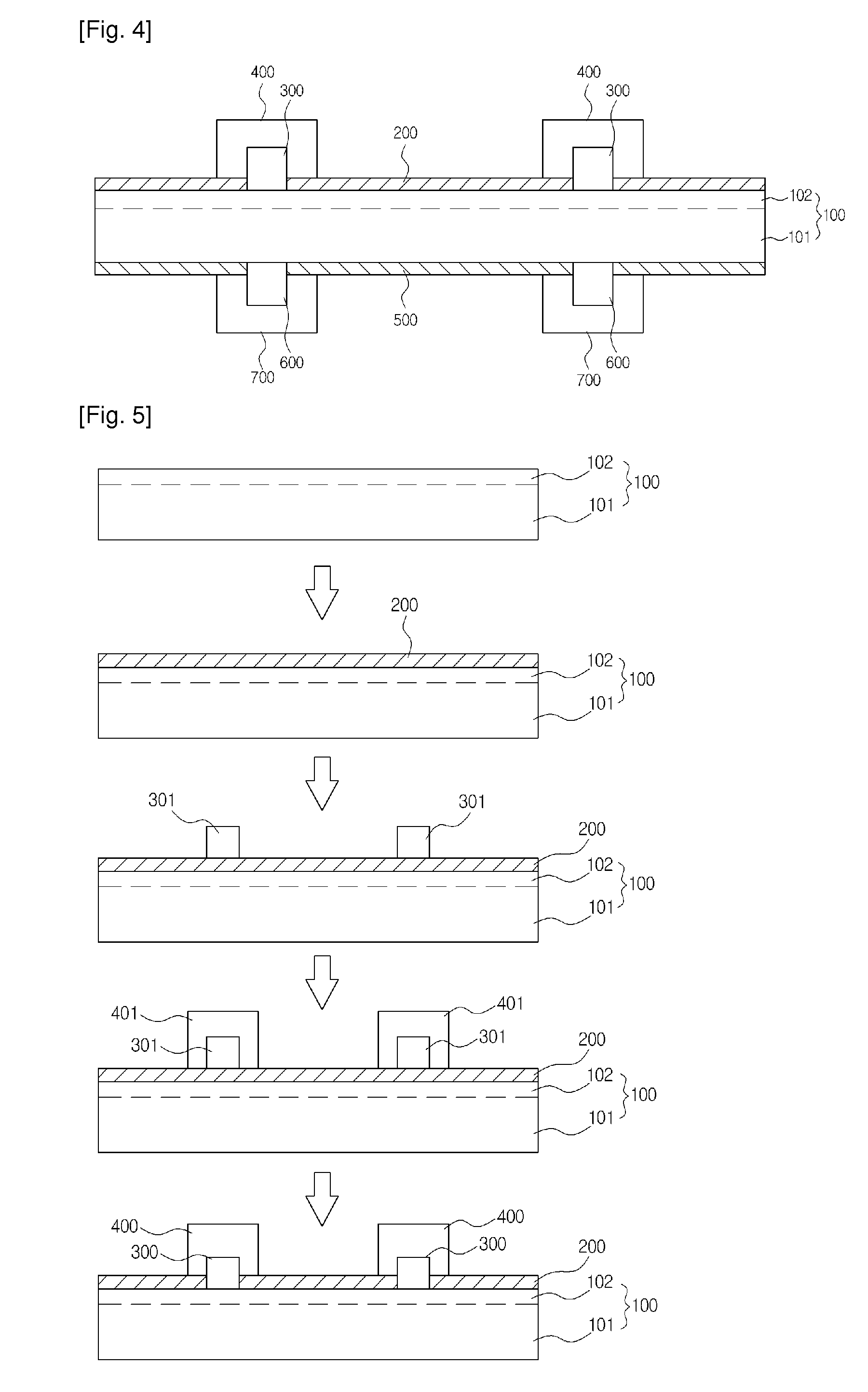Solar cell and method of manufacturing the same
a technology of solar cells and passivation layers, which is applied in the field of solar cells, can solve the problems of reducing the efficiency of solar cells, so as to minimize the damage of passivation layers, minimize the extinguishing of carriers, and minimize the loss of photoelectric current
- Summary
- Abstract
- Description
- Claims
- Application Information
AI Technical Summary
Benefits of technology
Problems solved by technology
Method used
Image
Examples
Embodiment Construction
[0035]100: semiconductor substrate having p-n junction[0036]200, 500: antireflection film[0037]101: p-type impurity doped region[0038]102: n-type impurity doped region[0039]300, 600: first electrode[0040]301, 601: first electrode[0041]400, 700: second electrode[0042]401, 701: second electrode[0043]W1: width of first electrode[0044]W2: width of second electrode
MODE FOR THE INVENTION
[0045]Hereinafter, preferred embodiments of the present invention will be described in detail with reference to the accompanying drawings. The following drawings are provided for those skilled in the art as examples in order to sufficiently explain the technical idea of the present invention. Therefore, the present invention may be modified in various forms without being limited to the following drawings, and these following drawings may be exaggerated to clearly explain the technical idea of the present invention. Further, throughout the accompanying drawings, the same reference numerals are used to desig...
PUM
 Login to View More
Login to View More Abstract
Description
Claims
Application Information
 Login to View More
Login to View More - R&D
- Intellectual Property
- Life Sciences
- Materials
- Tech Scout
- Unparalleled Data Quality
- Higher Quality Content
- 60% Fewer Hallucinations
Browse by: Latest US Patents, China's latest patents, Technical Efficacy Thesaurus, Application Domain, Technology Topic, Popular Technical Reports.
© 2025 PatSnap. All rights reserved.Legal|Privacy policy|Modern Slavery Act Transparency Statement|Sitemap|About US| Contact US: help@patsnap.com



